Plenty of advice exists on how to prevent moisture on your instrument – but what do you do if your precious tools of the trade get unexpectedly soaked? Cellist Davina Shum reflects on the soggy experiences of the French National Orchestra at the Paris Olympics opening ceremony
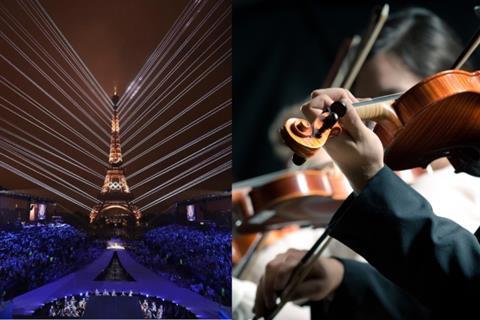
Discover more lutherie articles here
‘Il pleut!’ Anyone watching the Paris 2024 Olympics Opening Ceremony last week would’ve been hard pressed not to notice the constant rain that plagued the event. Fear and despair struck through the hearts of many musicians watching worldwide, who were subjected to images of the French National Orchestra, the members of which donned rain ponchos while their instruments were drenched without adequate cover.
Social media was rife with comments such as ‘the poor instruments!’ and ‘this is atrocious,’ observing how it was a shame to witness the soggy fate of so many instruments. Understandably – as string players, we are always told to take great care not to get our instruments wet, usually by exasperated teachers that have seen just a few too many mishaps in their time.
I realised that there are a lot of preventative measures and advice to heed when it comes to making sure your instrument is kept dry. Dealing with humidity is an ongoing maintenance issue, with no shortage of humidifier/dehumidifier products on offer. You can even purchase rain covers for your instrument case for extra protection against drizzly conditions. We know that moisture in the wood can threaten undesirable consequences – as wood is hygroscopic, it can bend and warp as moisture levels and temperature change dramatically, as well as lead to split seams, cracks and eventual damage to the varnish.
Practically all string players I know will ensure there is enough cover to protect their instruments if they are playing outdoors, with many even using spare and often cheap ‘stunt’ instruments to save their good instruments. (There’s speculation that members of the French orchestra would have employed spare instruments, as members of the London Symphony Orchestra did so during the opening ceremony of the 2012 games, miming to a pre-recorded track). Most of the time, players will have enough time to react to inclement conditions, and take cover if the heavens open up. One bass player I spoke to said that if it started raining, he’d walk out and seek shade. ‘No gig is worth the implications of damaging my only instrument.’ Given that he doesn’t have a spare instrument, he said, ‘If my instrument gets damaged in the rain, then I can’t take any more work.’
But what do you do if your reaction to wet playing conditions is out of your control? In my experience playing as part of an onstage theatre band, there were moments where my instrument would get accidentally splashed with prop liquids (i.e. sparkling water disguised as beer). Luckily I had a soft cloth with me at my stand, but needless to say, the actor responsible received a stern telling-off after the incident!
However, if you get stuck in a deluge and you’re trapped in a situation where you can’t escape and your instrument gets soaked (such as at a high-profile, televised event like the Olympics), what should you do? I realised that despite all the preventative measures we are taught in our training, as string players, we don’t really know what to do when the unthinkable happens! In my incident described above, I felt that all I could do was react in the moment and wipe my instrument down with a cloth. For more serious damage, I asked Florence-based luthier Paris Andrew, on what she would do if she were presented with a moisture-damaged instrument.
‘If in doubt, definitely visit a luthier,’ she said. ‘A check up with a luthier would probably be wise if the instrument got a proper soaking.’ What exactly would this entail? As an expert, she would unmount the instrument to stop ongoing moisture issues, such as pegs swelling and getting stuck in the peg holes, rusty strings and varnish damage, followed by wiping down the instrument with a soft cloth, such as a microfibre glasses cloth, and allow the instrument to fully dry out.
‘You don’t want to be blasting it with dry air because wet or humid wood suddenly getting hit with dry will cause a lot of problems,’ she says. She would then let the instrument sit a few days to dry out, after which she’d carry out a damage assessment, such as dodgy varnish, open seams or arching movement, before remounting the instrument.
With a combination of preventative measures from yourself, plus practical advice from knowledgable luthiers, we string players can hope to keep our instruments healthy in regulated environments. Let’s just hope that our best instruments never get so far as to become completely damaged and unplayable due to lack of adequate cover. Luckily, it’s sunny now in the French capital – though as for protecting your instrument from the heat, it is largely a similar story!
Read: Cats, bees and a swarm of flying ants: what do you do when your performance is disrupted by animals?
Read: Ask the Experts: protecting your instrument in hot and humid temperatures
Read more lutherie articles here
An exclusive range of instrument making posters, books, calendars and information products published by and directly for sale from The Strad.
The Strad’s exclusive instrument posters, most with actual-size photos depicting every nuance of the instrument. Our posters are used by luthiers across the world as models for their own instruments, thanks to the detailed outlines and measurements on the back.
The number one source for a range of books covering making and stringed instruments with commentaries from today’s top instrument experts.
American collector David L. Fulton amassed one of the 20th century’s finest collections of stringed instruments. This year’s calendar pays tribute to some of these priceless treasures, including Yehudi Menuhin’s celebrated ‘Lord Wilton’ Guarneri, the Carlo Bergonzi once played by Fritz Kreisler, and four instruments by Antonio Stradivari.













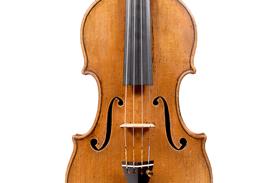
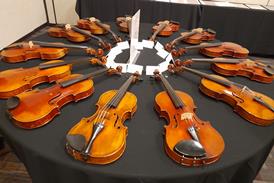





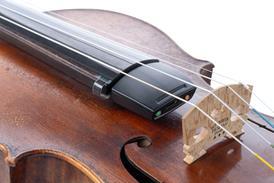
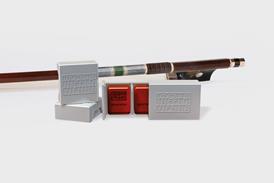
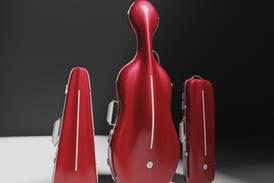















1 Readers' comment